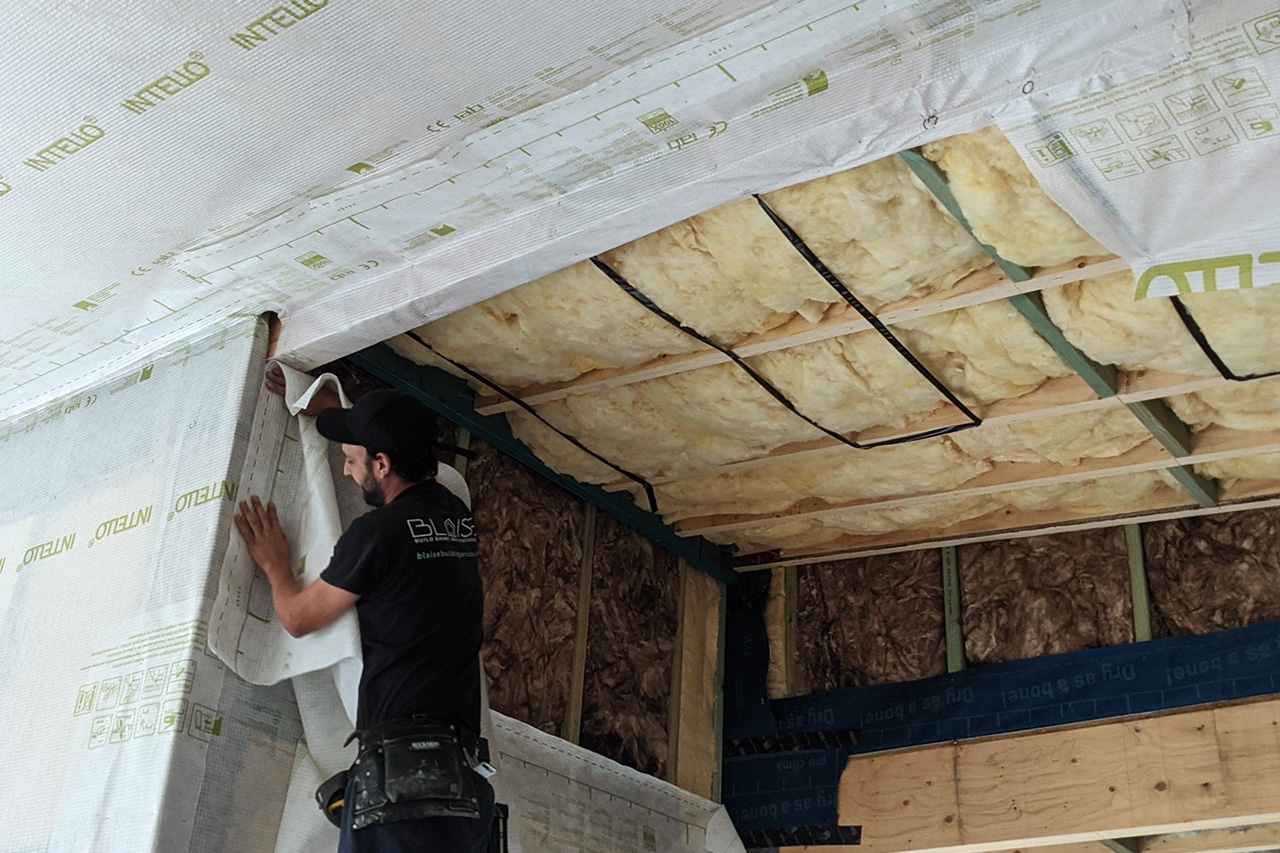Why Build An Airtight House?

[vc_row css=".vc_custom_1538637735250{padding-top: 0px !important;padding-bottom: 0px !important;}" el_class="single-post"][vc_column][vc_column_text el_class="single-post-content" css=".vc_custom_1635815448188{margin-bottom: 25px !important;}"]Many building owners are unaware that airtight construction improves the quality of life while costing less money to run. Furthermore, an airtight structure lasts longer.
The following are the key reasons for airtight construction:
-Saving energy and money on heating means lowering CO2 emissions.
-There is no structural harm as a result of hidden mould.
-There is no draft in the living space.
-Indoor air quality (dust, pollen, smells) is improved, and pollutants from the outside are reduced.
-Ventilation systems perform better.
-Improved soundproofing
-In the event of a fire, there will be a gas and smoke barrier.
-Reduce the likelihood of pests and insects invading your home.[/vc_column_text][vc_row_inner][vc_column_inner][vc_column_text]
It’s not just about the products, it’s about “how to use the products”.
[/vc_column_text][vc_column_text el_class="single-post-content" css=".vc_custom_1635815692318{margin-bottom: 35px !important;}"]Airtight vs Waterproof: What's The Difference?
When we speak of a tight building envelope, we usually distinguish between airtightness and weather-tightness. The airtight building envelope keeps heat from escaping by convection and prevents condensation from forming in the walls.
Airtightness stops air currents from passing from the inside to the exterior of the building envelope. If the structure is not airtight, hot and cold air can escape from the inside of the building. This results in energy loss. This is an issue as it dramatically reduces the comfort of the building and efficiency of its envelope leading to higher energy loss and consumption and higher heating and cooling costs.
Do not confuse air tightness with diffusion tightness! Water vapour can diffuse through the building membranes even if there is no air flow through the building envelope. Wind-tightness, on the other hand, shields the structure against air currents that arrive from the outside and escape somewhere else. As a result, the insulation loses its effectiveness, resulting in increased energy use and expenditures.
Closed Building Envelope
The more energy-efficient a structure must be, the more necessary it is to have an airtight structure. Air and vapour control layers, as well as adhesive tapes, are all viable options for creating the airtight layer (we list the main types of vapour control and airtightness control in this blog post). A structure's materials, polymers, and adhesive products must all be extremely resistant to ageing, as a building should last for decades.
It’s not just about the products, it’s about “how to use the products”
It's just as crucial to have a good installation as it is to employ high-quality materials. Only by properly installing the goods can you avoid leaks and thus moisture entry into the building envelope. This can lead to the growth of mould, which can cause structural damage.
Airtightness Brings Living Comfort
You're still not convinced about the importance of airtightness? An airtight building envelope is important for more than just preventing mould damage. Buildings that are airtight create a comfortable living environment, protect the environment, and save money on energy. As a result, they protect the structure, the people' health, and their money all at the same time.
When designing the airtight building envelope, we make sure to pick goods that are free of residential pollutants to ensure that nothing gets in the way of a suitable temperature in the structure.[/vc_column_text][/vc_column_inner][/vc_row_inner][vc_column_text el_class="single-post-content" css=".vc_custom_1635815728332{margin-bottom: 25px !important;}"]If you like to find out more about Passive House get in contact with us.[/vc_column_text][/vc_column][/vc_row]
